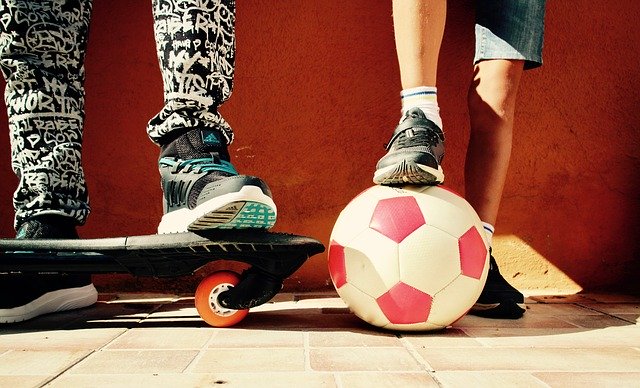5 Tips to Protect Your Kids from Sports Injuries
These days, kids participate in more structured activities than ever before – including youth sports teams and sports camps. Many kids play more than one sport, because they enjoy being active, they’re hoping to hone their athletic skills, or both.
But playing more sports means risking more sports injuries – in the United States, 3.2 million kids aged 5 to 14 go to the emergency room with sports injuries each year. And sports injuries are becoming more common in kids, but that doesn’t mean they’re inevitable. Accidents happen, but many sports injuries can be prevented with these five tips.
1) Get Pre-Season Physicals
Pre-season sports physicals are required for many youth sports and school athletics teams, and it’s for a good reason. A pre-season physical can make sure that your child is fit to play sports. It can pinpoint any potential conditions or physical issues that could put your child at risk, so you can get them the treatment they need to play safely.
2) Encourage Cross-Training
Cross-training is a great way to keep kids active and in shape during the offseason. Not only can cross-training keep kids in shape when they’re not playing their favorite sport, it can prevent over-use injuries by working out different muscle groups and taking the strain off of joints and ligaments that are typically used during the sport of preference. Cross-training incorporates more lateral movements, balancing patterns of muscle activation and strengthening, to reduce the risk of overuse injuries overall.
That’s why cross-training is strongly recommended for kids who enroll in sports academies or train hard in hopes of becoming a professional athlete one day – professional athletes are much more likely to have played multiple sports growing up, because athletic specialization increases the risk of sports injuries that can trash a young athlete’s chances of one day going pro. Of course, even if your child isn’t interested in a professional sports career, not getting hurt is always the desired outcome.
3) Get Kids Proper Training in Form and Technique
Lots of sports injuries happen when athletes have poor form. There’s always a right way to do things, and in sports, that right way minimizes the risk of injury. Football players need to learn the right way to tackle so they don’t get a concussion, for example. Golf players need to learn how to properly swing their club so they don’t injure their backs, knees, elbows, shoulders, or wrists. Even slight mistakes in form can cause injuries, and learning proper form takes training, so it’s vital that kids get instruction from coaches that understand the appropriate biomechanics for their sports.
If your kids can’t get that training from their youth sports or school team coach, you should get it for them. Send your young golf player to one of the great golf schools in Florida to get him or her the training in biomechanics he or she needs to play without injury. Send your young basketball player to a sports academy for basketball. If you can’t afford a private sports academy or don’t want to pack your kid off to boarding school, you should at least consider a sports camp where they can learn from, and network with, top coaches in their sport. A sports camp or academy can also teach kids the importance of warm-ups and cool-downs for preventing sports injuries.
4) Make Sure Kids Get Adequate Rest, Hydration, and Healthy Food
Kids and adults alike are more prone to injury when they’re tired, and dehydration itself can be an issue when kids are playing vigorous sports outside in the heat. Young athletes need plenty of healthy calories from whole grains, lean meats, dairy, and fruits and vegetables, in order to build strong bones and muscles and find the energy to play with proper form and technique. Make sure your young athlete is eating a healthy diet, and drinking small amounts of water throughout the day to stay hydrated. Sports drinks aren’t necessary unless your child has been playing vigorously for over an hour.
Athletes also need more sleep than average, since sleep helps the body repair itself. Sleep needs vary depending on your child’s age, but keep in mind that your child might need more sleep than average – as much as one or two hours more – if he or she is an athlete.
5) Educate Yourself and Your Kids on the Signs of Injury
Lots of young athletes get the idea that when they experience pain or discomfort, especially in the middle of a game, they have to power through and keep performing. But ignoring the early signs of an injury can make it exponentially worse. Not all sports injuries will be instantly catastrophic; some will start small, but become more serious if the athlete doesn’t take time to treat the issue. Teach your kids to recognize the early signs of a sports injury, and learn to recognize them yourself. Encourage your kids to say something if they’re experiencing pain during sports, but be ready to intervene if your athlete starts limping, rubbing a joint or limb, throwing differently, or exhibiting other signs of pain.
Sports injuries can take your child out of the game for an entire season – or longer. Do what you can to prevent them, so your child can keep playing – year after year.

